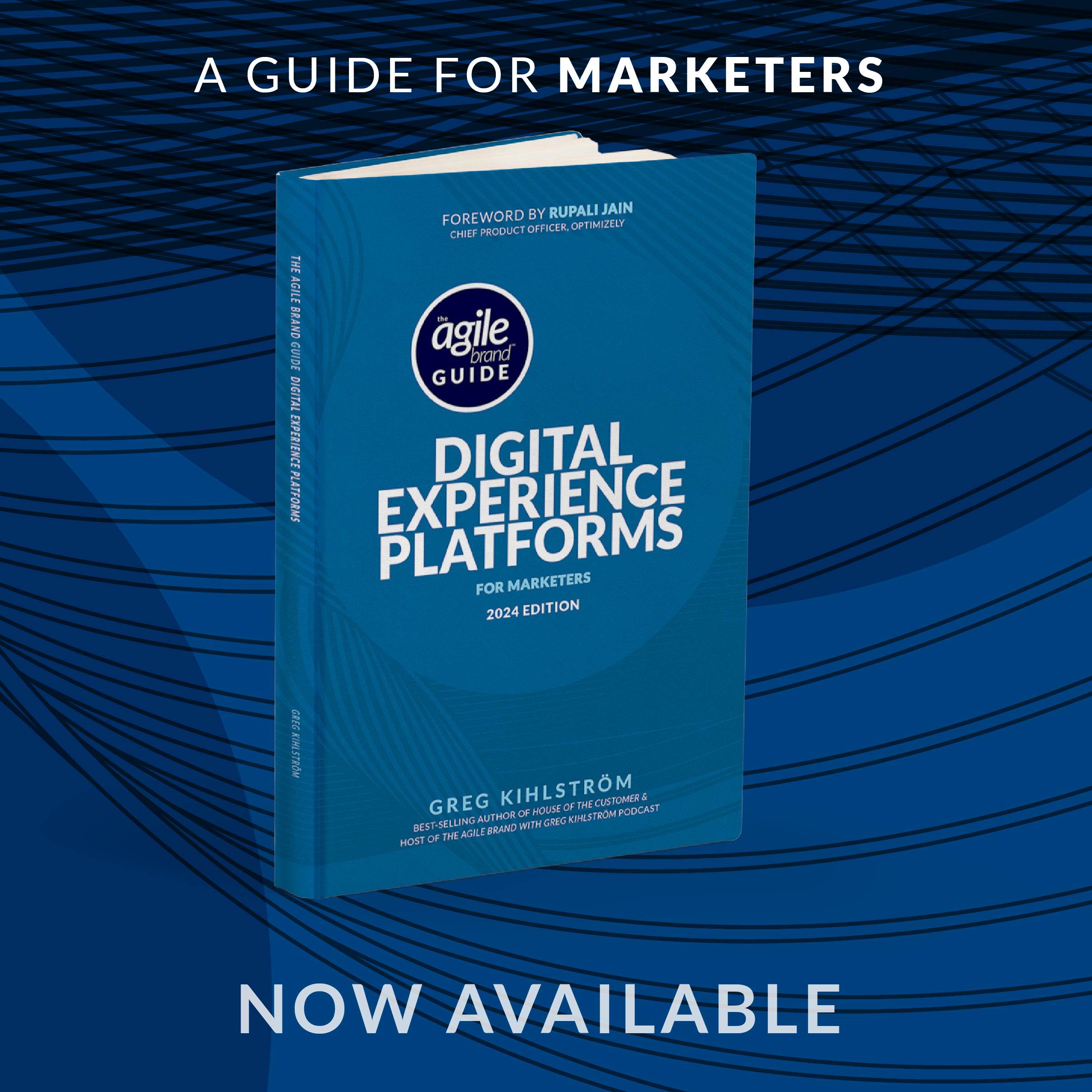This article was based on the interview with Uldis Baumerts from Bryj Technologies by Greg Kihlström, AI and MarTech keynote speaker for The Agile Brand with Greg Kihlström podcast. Listen to the original episode here:
Few advancements have reshaped retail marketing as profoundly as artificial intelligence (AI). What was once an experimental tool for brands with big budgets has become an essential resource that anyone aiming to remain competitive needs to embrace. Rising ad costs, fragmented media channels, and the need to capture—and hold—the attention of increasingly discerning consumers have all put pressure on traditional methods of marketing. Into this demanding landscape steps AI, promising to streamline ad spend, increase personalization, and ultimately create more meaningful connections with customers.
This article draws on insights from an interview with Uldis Baumerts, Chief Operating Officer at Bryj Technologies. Over the past 15 years, Uldis has led service and product development in global e-commerce, managed large-scale IT operations, and driven AI-powered initiatives that merge creativity with data-driven efficiency. Here, we’ll explore how AI has transitioned from a “nice to have” to an indispensable marketing tool, the ways in which it fuels creativity, the challenges of implementing it responsibly, and the opportunities it opens for brands of all sizes.
1. The Rise of AI from Luxury to Essential
Not so long ago, implementing AI in marketing felt futuristic—only the biggest names in tech or well-funded corporations dabbled in it. Yet over the last few years, consumers have grown to expect real-time responses, hyper-relevant ads, and seamless brand interactions. This dramatic shift made AI-powered strategies almost mandatory for retailers looking to survive and thrive. According to Uldis:
“AI has truly transformed the retail marketing. Initially, it was a luxury for companies with big budgets and technical teams, but with the explosion of data and increasing customer expectations for real-time personalized experiences, AI has become indispensable.”
At the heart of this transformation is the ability of AI to cut through the noise in a jam-packed marketplace. Rather than relying on manual guesswork, marketers can lean on data-driven insights that tell them exactly which audiences are most likely to convert and which channels deliver the best return. This granular analysis is critical, especially when ad costs on major platforms continue to climb. As Uldis explains, one of the biggest advantages of AI is that it allows marketers to recognize and capitalize on subtle patterns that human eyes might miss, driving better targeting, more meaningful campaigns, and a healthier bottom line.
For instance, eBay once partnered with an AI platform to refine its email marketing, predicting which customers would most likely respond to particular messages. By personalizing both timing and content, eBay boosted its click-through rates and conversions without enormous additional expense. The lesson here: applying AI to unearth data insights can pay off quickly, whether you’re a giant retailer or a growing brand.
2. Marrying Data and Creativity
A persistent myth lingers around AI: that its adoption pushes out human creativity, replacing it with cold, mechanical processes. In practice, many organizations are finding precisely the opposite to be true. With AI automating tedious tasks such as monitoring ad bids, segmenting mailing lists, or generating the first drafts of creative assets, marketers gain precious time for strategic thinking and bold storytelling. Uldis captures this dynamic:
“This is where AI becomes an enabler rather than a disruptor. By handling the heavy lifting, such as data analysis, campaign optimization, and even initial creative drafts, AI frees up the time for marketers to focus on what they do best—storytelling, creative strategy, and brand building.”
In other words, AI can help dissect consumer behaviors, leaving human strategists to craft campaigns that are more imaginative and purposeful than ever. Consider a project from Nutella, which employed AI to design over seven million unique jar labels, each reflecting different tastes and preferences. These personalized jars sold out swiftly, proving that data-backed creativity isn’t limited to digital advertising—it can shape physical products, too. Similarly, Starbucks leverages AI to refine its loyalty program, identifying what might motivate a specific customer segment to keep coming back. By using automated insights to target promotions and rewards, they make each offer feel personal.
Even on the operational side, AI helps maintain a harmony between personalization and integrity. One of its most powerful capabilities is predictive analytics, which can forecast future trends or consumer behaviors based on historical data. From recommending products “likely” to be a perfect add-on (a tactic famously embraced by Amazon) to reallocating ad budgets the moment a certain channel begins underperforming, predictive modeling ensures that marketing stays one step ahead. Uldis emphasizes how this changes not just campaigns, but business strategy as well:
“By analyzing historical data and identifying patterns, [AI] can forecast customer behavior, market trends, and even campaign performance with the use of models like the Bayesian framework. This not only enhances the shopping experience, but also boosts sales by anticipating what customers are likely to buy next.”
Of course, creativity extends beyond simply attracting new customers. AI can be pivotal in crafting loyalty campaigns, from understanding how often a customer returns to predicting which offers might re-engage someone on the brink of churn. The upshot: AI guides the flow of big data, but people create the vision, shape the brand voice, and weave compelling stories that transform casual shoppers into brand advocates.
3. Overcoming Implementation Hurdles
Despite its promise, adopting AI-driven approaches isn’t without obstacles. Companies frequently grapple with data quality, convoluted legacy systems, or an organizational mindset that hesitates to entrust critical decisions to AI. As Uldis notes:
“While AI offers incredible potential, there are definitely some hurdles brands need to navigate. One of the most common and talked about challenges is data quality. AI is only as good as the data it’s trained on. … Teams may not have the expertise needed to fully leverage AI tools. That’s why education and training are so important.”
Many enterprises today maintain a patchwork of tools—from CRM platforms and email marketing software to social media management systems. Getting these platforms to speak to each other and send quality data to AI models can be daunting. Smaller companies often assume they lack the necessary budgets or data troves to benefit from AI, but that’s increasingly untrue. Even robust AI solutions are becoming more accessible and user-friendly. Popular email marketing tools, for example, have introduced AI-enhanced features that automatically segment subscriber lists or optimize send times.
For businesses of all sizes, the key is to start with one or two manageable applications of AI. If you’re a small retailer, that might be using AI-driven chatbots to quickly address basic questions and free up human staff for complex queries. Or it might be using built-in AI to create social media ads targeting a narrowly defined demographic. By tackling these “doable” implementations first, teams can see real benefits early on, which in turn builds confidence and encourages further experimentation.
Addressing skill gaps is just as crucial. While AI now often comes in a more turnkey form, marketers and analysts still need to know how to interpret results and translate them into strategic decisions. Many of the brands that excel with AI devote time and resources to upskilling their teams, sometimes even partnering with external specialists for support. As a case in point, Sephora invested heavily in training its in-store staff to handle the brand’s AI-driven virtual artist tool, ensuring a smoother adoption and a consistent brand experience.
4. Future Opportunities and Ethical Considerations
Even as retailers scramble to implement AI solutions, new possibilities continue to emerge. Hyper-personalized advertising—delivering messages so precisely calibrated that each customer feels singled out—promises to be an area of explosive growth. AI-driven virtual influencers, once a novelty, are gaining traction, and voice-activated commerce is on the rise as more people rely on smart assistants for daily tasks.
“There are so many exciting developments on the horizon, and one area I’m particularly excited about is hyper-personalized advertising. With advancements in data modeling, AI will be able to deliver ads that feel almost tailor-made for each individual. … Another one is the rise of AI-generated virtual influencers.”
While these developments open up powerful marketing avenues, they come with new ethical and practical considerations. AI, at its core, relies on data—frequently personal data that, if mishandled, can breed distrust among consumers or even lead to violations of regulations like GDPR or CCPA. Marketers need to ensure transparency around data usage, clarifying what’s gathered, how it’s used, and how it benefits the consumer. Bias in AI models is another significant concern. If the underlying training data is skewed, it could exclude certain demographics from targeted offers or lead to campaigns that inadvertently alienate segments of the audience. Says Uldis:
“As marketers, we have a responsibility to ensure that AI is used ethically. One key area is data privacy. Consumers are becoming more aware of how their data is being used and brands need to be transparent about data collection as well as usage.”
Striking a balance between automation and human oversight is also important. While AI can optimize processes at scale, decisions that might jeopardize a brand’s reputation or have broad social impacts should still involve a human review. When done well, AI serves as an engine powering insightful decisions, freeing humans to inject empathy, creativity, and strategic nuance into each campaign.
Conclusion
The retail ecosystem has undergone a seismic shift as AI has grown from a peripheral novelty into a central driver of advertising and marketing strategies. In this pivotal moment, brands looking to boost efficiency, build deeper relationships with customers, and stay one step ahead of consumer demands can no longer overlook AI’s potential. Still, adopting AI isn’t simply about plugging in a new tool and expecting automatic transformations. As Uldis Baumerts highlights, success relies on aligning teams, improving data quality, investing in training, and maintaining a clear ethical framework.
From hyper-personalized ads to predictive analytics that stay ahead of consumer behavior, AI’s greatest promise is to help marketers be more thoughtful in how they deploy their resources and craft their stories. Freed from repetitive tasks, they can focus on creativity and strategic thinking—forming stronger connections with audiences by delivering the right message at the right moment. Through careful adoption and a mindset of continual learning, retailers of all sizes can leverage these emerging capabilities. After all, AI is not a destination; it’s a dynamic journey—one that merges data and the human touch to shape a more innovative and responsive future for retail.











